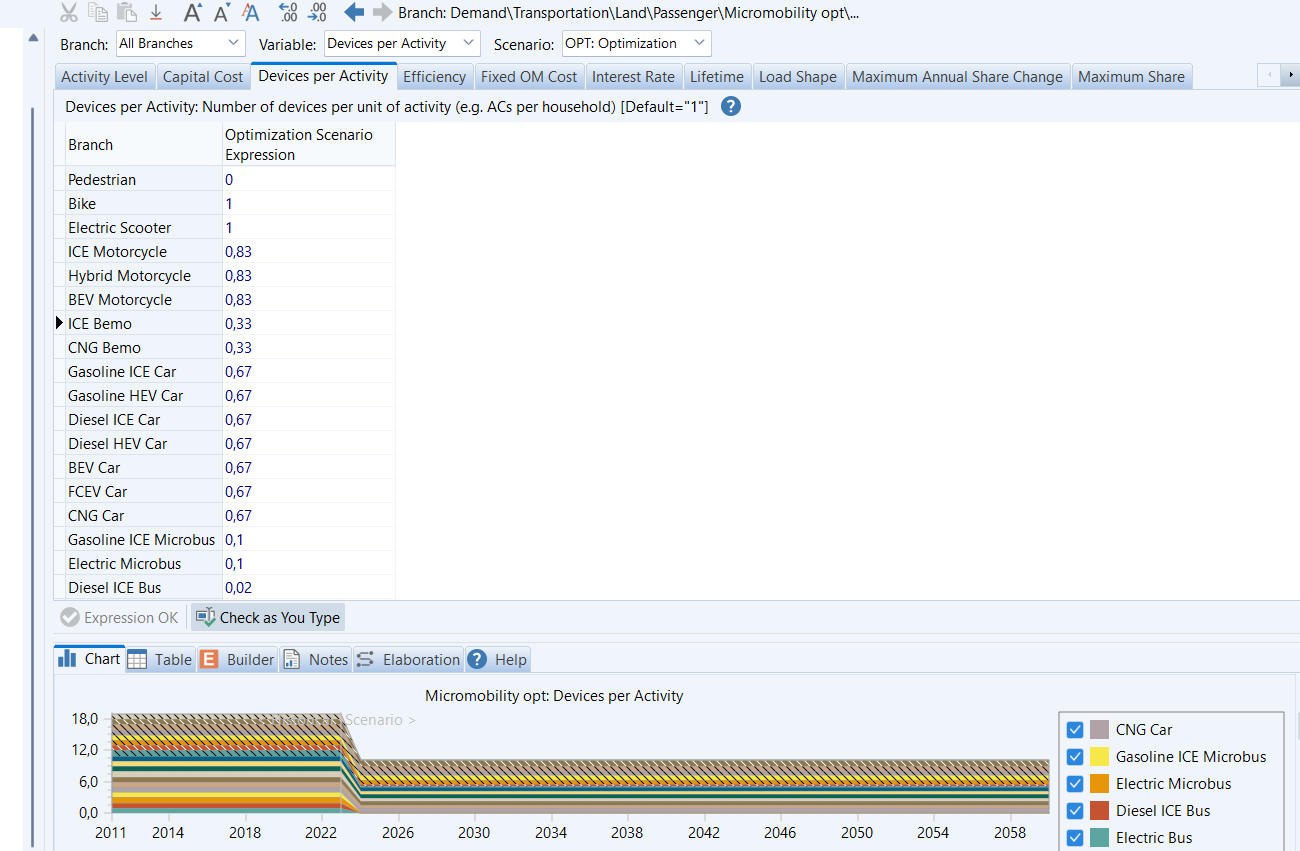Topic: Challenges in Transport Sector Demand Optimization in LEAP: Data Input Clarifications Needed Subscribe | Previous | Next
1 Like
Hi LEAP Community,
We at IESR are currently developing a model for Indonesia and are keen to explore LEAP's capabilities, particularly in demand optimization. While we've found the features and data inputs to be quite suitable for building appliances and some industrial technology optimizations, we're finding the process less intuitive for the transport sector.
For instance, we're working on optimizing mode share and technology options directly under passenger micromobility. However, we've encountered some challenges with the data requirements:
- Device per Activity: If the activity unit is in pass-km, how should we approach filling in the 'device per activity'?
- Additionally, how do we interpret efficiency in this context—efficiency from what to what, particularly when the activity unit is in pass-km? How do we translate pass-km into useful energy?
- Unit Capacity: Do we need to input the horsepower for each type of vehicle, and how should this be handled for non-motorized options like bikes or pedestrians?
- Useful Energy Intensity: What is the best way to translate this in the context of transportation?
- Cost Parameters: While we can make estimations or assumptions for Capex, Fixed OM, and Variable OM, I need clarification: does the 'cost per demand device' parameter mean cost per vehicle, or is it equivalent to cost per pass-km?
Any insights or guidance on how to best approach these inputs would be greatly appreciated!
1 Like Hi Pintoko,
Currently demands-side optimization in LEAP2024 (as part of energy system optimization) is still a somewhat experimental feature, and it so far only supports branches where you have specified useful energy demands. However, I AM planning on focusing on these areas in the coming weeks and looking into how we can extend it to support optimization for other types of demands (e.g. homogenous transport demands in pass-km or tone-km).
Sorry I cannot report anything more at this point, but please stay tuned for updates in the next few months.
Sorry I cannot report anything more at this point, but please stay tuned for updates in the next few months.
In the meantime, you can of course continue to model transport demand using LEAP's existing simulation/what if methods including activity level and stock turnover methods.
Best,
Charlie



